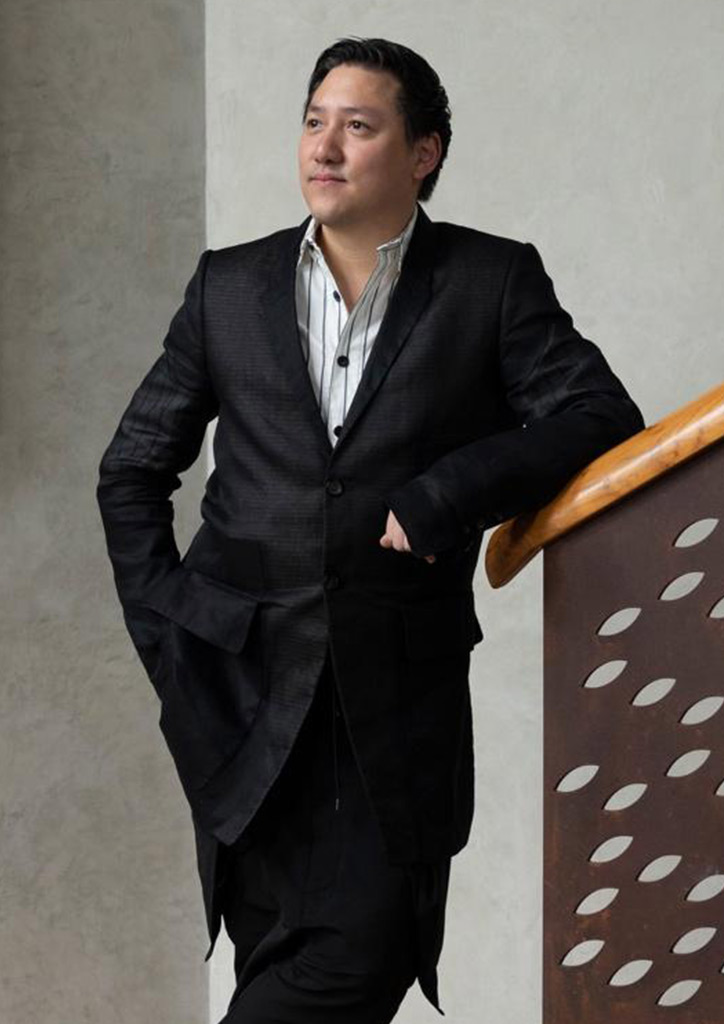“My works always fuse art and architecture, blurring its boundaries—thinking of processes, materiality, environment, sustainability, technology—all these manipulations in art and design encourage innovation.”
After Carlo Calma and his design firm received back-to-back recognition for their projects in the World Architecture Festival and Concrete Construction Awards, they didn’t spend the better part of a year celebrating.
READ ALSO: Bling Ring: 5 Filipino Fine Jewelry Designers You Should Know About
Rather, they immediately went back to the drawing board. Carlo Calma Consultancy Inc.’s Cagbalete Sand Clusters, Museum for Architecture + Residences, and Infinity House were just the beginning of a continuous streak of successes.
Since then, they’ve been busy on ongoing projects of private, secondary, and vacation beach homes. Their clientele
had realized the importance of having homes to escape to, whether it’s during lockdowns or the simple occasion of
having a nomad office somewhere isolated.
On top of a resort project in San Vicente inspired by vintage, sailing, and the sea, they’re also cooking up Tagaytay
private villas with a pavilion restaurant and submerged museum inspired by lava rocks and volcano typology. It’s all in a day’s work for this visionary.
Concept architecture
“My workaround multiple scales is always conceptual and has a powerful intention and meaning. In the layman’s eyes—it might look very avant-garde or very modern, but when we explain the process and the narratives of every project, it works on the site,” Calma tells Lifestyle Asia.
He sees himself as a “slasher.” To wit, a multi-hyphenate artist, designer, architect, developer, restaurateur, and gin enthusiast all in one. “Basically, I wear many hats but I consider them all like architecture,” Calma explains.
Whereas others perceive design to be divorced from art, the architect sees a marriage of concepts.
“I don’t see it as limiting or conflicting concepts but more of a collaboration of design ideas and experimentation to make unique and authentic pieces of architecture. My works always fuse art and architecture, blurring its boundaries—thinking of processes, materiality, environment, sustainability, technology—all these manipulations in art and design encourage innovation,” Calma opines.
A concept could take two weeks at a minimum, including the perspective renders and animation, according to him.
“Every project will be very personal and intimate knowing first the client then the investigation of the site—its context, history, narratives, and environment,” Calma contextualizes.
Design solutions
Moreover, the designer believes that he and his colleagues must be proactive in making direct and active responses to what is happening locally and globally.
Attached to this desire is the responsibility to be aware of worldwide issues and how designers should address these. “We need to address this in all scales of art, creative, design, and architecture production,” Calma declares. There is more to worry about than the pandemic, he reminds, including climate change.
“As designers, we need to make solutions to a problem or make a statement. There is no one set of solutions and normally I don’t consider aesthetic quality as right or wrong,” Calma posits.
In practice, this works on a case-to-case basis, according to him. This translates to how architecture performs in the site, as well as how it adapts to or helps the community involved.
Such feeds the hunger for architecture that “activates communities and connects to larger networks.”
And not everything needs to be built from scratch, according to the visual artist, who suggests that there are
intelligent solutions for adaptive reuse. “The misconception comes may be that because the design is good it is expensive to make,” Calma reveals.
Breaking ground
Based on the decade-long experience of starting his brand from scratch, the artist believes that every firm or studio
should have an ethos or personality to “really be authentic.”
Ideally, he says, one should be outside of the molds of standard design practice. This extends to one creating their niche within their practice, naming as an example how even film can be architecture.
“As designers, we should continually experiment and innovation should be your passion. We should continually strive for excellence and quality but also to open our eyes for new possibilities and potentials and by opening up our senses and being inspired by every day we begin to open the metaphysical realm,” Calma notes.
Just as important, he says, is considering the environment and sustainability. It means asking how we can reshape
cultural heritage and identity, as well as how we can advance technology and construction methodology.
“All of these and more are combinations to make the design solution groundbreaking,” Calma says.

This story was first publishing in the April 2022 issue of Lifestyle Asia.





